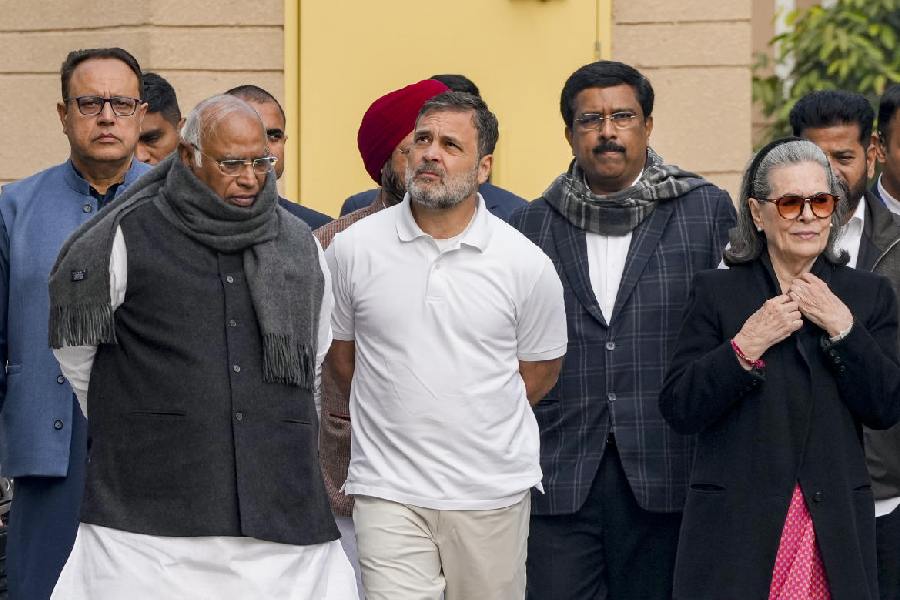 |
| (From left) Goswami, Gogoi and Satchidanandan at the release of Yaatra. Picture by Ramakant Kushwaha |
New Delhi, Dec. 8: Assam has come a long way in literature and culture. Today, the state embarked on a journey to acquaint the nation and the world with these treasures.
Yaatra, a bi-monthly English journal, was launched by Assamese litterateurs at the Sahitya Akademi auditorium here.
Celebrated writer Mamoni Raisom Goswami, who was present at the launch of the inaugural issue of the 164-page journal, said: ?Our rich heritage is hardly known to the outside world and finds scant mention in history textbooks. Yaatra will fill the gap.?
Assam chief minister Tarun Gogoi, Akademi secretary K. Satchidanandan and a large number of Assamese residents of the capital attended the function. Gogoi described the launch of the publication as a milestone.
A host of writers, including Goswami, Hiren Gohain, Pradip Acharya, Amalendu Guha, Nitya Bora and Hare Krishna Deka, are associated with it. Its honorary editor is Dhruba Jyoti Borah.
The non-profit, bi-monthly journal aims to showcase the best that Assam has produced in the realms of literature and culture. Each issue will also contain a section dedicated to personalities and cultural issues of the state and the Northeast.
Explaining the significance of the journal, Goswami said it was a ?big leap forward? that would help propagate Assamese culture and history.
To begin with, 1,000 copies will be distributed among universities, research institutes, embassies, academics and journalists. The expenses will be covered by the Rs 3.5-lakh fund built with contributions from individuals and oil companies.
Subsequently, the 12 issues that have been planned in advance for two years will be priced at Rs 100 and the cost of production will be met through voluntary contributions.
?This journal will contribute towards redressing the grievances of the people of Assam who have always felt the need to create awareness about our culture. We appeal to everybody to contribute to the success of this venture,? said Borah, one of the brains behind this unique effort.
He said there were numerous ?hidden aspects? of the Assamese language that needed to be highlighted. ?For instance, the assumption that the language originated in the 11th century AD is mistaken because recent evidences point to its existence as early as the 5th century.?











